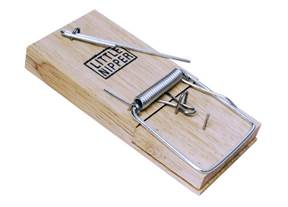How a Dead Dog sold Records
- Published
- in Hearables, Serendipity
It’s one of the best know trademarks in the world, which has been in use for over 125 years. It’s also a surprisingly complicated mark – not many trademarks are oil paintings. If you recognised it, well done. Except it’s not what you thought it was. This is the original painting – not the one that everyone recognises, and it has a strange story.
The picture above is my attempt to create the original that Francis Barraud painted around 1897. (We know what it looked like, as a black and white photograph of it was used in a trademark application.) It depicts Nipper – a dog Francis inherited when his brother died. Francis brought Nipper from Bristol up to London, but Nipper himself had died some years before the painting was done. As a new world of audio recording started to emerge, Francis saw an opportunity to paint Nipper listening to “His Master’s Voice” emanating from one of Mr Edison’s new voice recorders. Having completed the work, he took it along to the Edison offices in London, hoping to sell it to them. They failed to share his enthusiasm, sending him packing with the prosaic observation that “dogs don’t listen to phonographs”. It was one of history’s great marketing mistakes.
After this disappointment, one of Francis’ friends suggested that he repainted it to replace Edison’s phonograph with one of Berliner’s new gramophones, pointing out that the polished brass trumpet of the Berliner unit would look much more attractive than the black horn of the Edison phonograph. Francis took up the suggestion and painted over the offending Edison unit, giving us the image we all know so well. When he took it to Berliner’s London offices, they were ecstatic, purchasing both the picture and the copyright, an act that has probably making Nipper the world’s most well-known dog.

There is an irony here. The original composition made sense, as Edison’s phonograph was a recording device. Nipper’s master could have recorded his voice on the wax cylinder, leaving it to repeat “sit” or “stay”, or any other commands that “Master” had recorded before he left the room. As Edison’s phonograph was a recording device, these could be updated to suit the occasion. In contrast, Berliner’s gramophone could only play pre-recorded discs, which means they were unlikely to contain Nipper’s master’s voice, but that of some other popular dog owner who was trying to make a place in the early charts. In that respect, the Edison marketing manager was thinking more about Berliner’s product than his own, but his pedantry lost him the opportunity to own an iconic marketing image.
At the start of the 20th century, patent wars and legal action between Edison, Berliner and other audio companies, as they fought for dominance of the industry, led to trademarks and brand names changing. Despite that, the image of Nipper remained in the public heart, eventually passing to the company that bore the original painting’s name – now abbreviated to HMV. Barraud never achieved great fame as a painter, but spent his life reproducing the portrait for several generations of recording industry executives. The original allegedly hung in the UK offices of EMI, and is now in their archive. It would be nice if it could be brought back into public view, as it’s a great portrait that deserves to be seen.
Nipper has garnered a lot of public affection, being the source of many paintings, cartoons and an entire subculture of reverential merchandise. For more on Nipper, you should visit the excellent NipperArt archive at https://phonographia.com/Nipper/Nipper.htm, which has a brilliant collection of Nipper artwork.
Although Nipper died before the painting was started, his life has been commemorated. Nipper originally lived in Bristol, where Barraud’s brother Mark was a scene painter at a theatre. Bristol has commemorated his time there with both a statue of Nipper and a plaque.

Nipper is also commemorated in London. There’s a plaque in a yard in Kingston-on-Thames, where it’s believed he was buried, as well as one at the end of Piccadilly, where Francis Barroud lived while he painted his most famous picture.

Barraud’s Nipper wasn’t the only Nipper to start a journey to fame in 1897. While Francis was doing his painting in London, two hundred miles north, in Leeds, Henry Atkinson was inventing the “Little Nipper” mousetrap. Like the Nipper painting, that trademark is still in use today and the product has found fame in numerous cat and mouse chases, from “Tom and Jerry” to “Mouse Hunt”. I doubt that either man realised just how long lasting their respective Nippers would be.

Sadly, Leeds hasn’t recognised Henry Atkinson’s achievement with a plaque for him. If anyone from Leeds is reading this, tell your local history society that Henry needs one. But it is a fascinating coincidence that the same year gave us two different Nippers, both of whom would generate trademarks that are still going strong a century and a quarter later.
